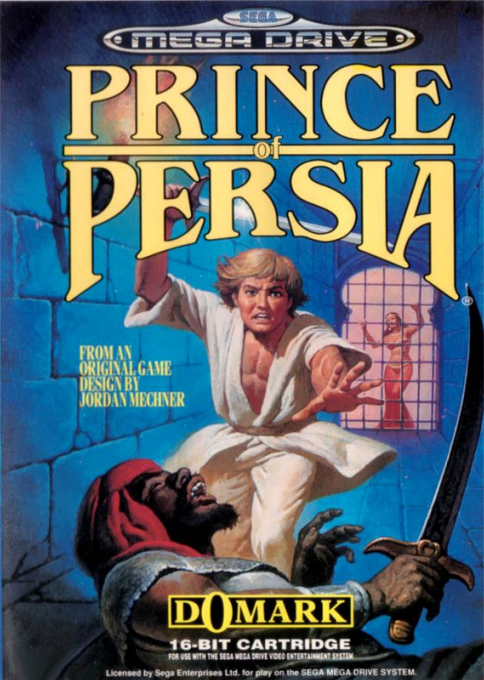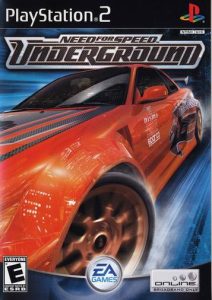Prince of Persia Europe
Prince of Persia Europe is a cinematic platform game developed and published by Broderbund for the Apple II in 1989. It was designed and implemented by Jordan Mechner. Taking place in medieval Persia, players control an unnamed protagonist who must venture through a series of dungeons to defeat the evil Grand Vizier Jaffar and save an imprisoned princess.
The game was critically acclaimed and, while not an immediate commercial success, sold many copies as it was ported to a wide range of platforms after the original Apple II release.
It is believed to have been the first cinematic platformer and inspired many games in this subgenre, such as Another World.[4] Its success launched the Prince of Persia franchise, consisting of two sequels, Prince of Persia 2: The Shadow and the Flame (1993) and Prince of Persia 3D (1999), and two reboots: Prince of Persia: The Sands of Time (2003), which was followed by three sequels of its own, and Prince of Persia (2008).
Gameplay – Prince of Persia Europe

The main objective of the player is to lead the unnamed protagonist out of dungeons and into a tower before time runs out. This cannot be done without bypassing traps and fighting hostile swordsmen.
The game consists of twelve levels (though some console versions have more). However, a game session may be saved and resumed at a later time only after level 2.
The player has a health indicator that consists of a series of small red triangles. The player starts with three. Each time the protagonist is damaged (cut by sword, fallen from two floors of heights or hit by a falling rock), the player loses one of these indicators.
There are small jars containing potions of several colours and sizes. The red potions scattered throughout the game restore one health indicator. The blue potions are poisonous, and they take one life indicator as damage.
- The DOS version allows the player already in the very late part of Level 12 to continue after time is out with no extra life, so:
- Restarting the level by pressing appropriate buttons is not death, thus not failing the game yet.
- Any player’s death, including having killed Jaffar then falling from excessive floors of heights, also fails the game in which case the Princess is also gone.
- Only defeating Jaffar and exiting Level 12 alive will still save the Princess, with a negative time score in the hall of fame.
- The Macintosh port will not give the player a game over once they reach the final area of Level 12 (stored in data as Level 13), provided they make it there on time.
- The player must cross the magic bridge and make a screen-transition to a room with falling tiles to be ‘safe’; once there, they will always be allowed to continue, regardless of deaths or time expiration. Running out of time at any point before the screen-transition, including the bridge, will result in game over as usual.
- The Super NES remake allows the players to save themselves after time is out, to get the game over at the end without the princess saved.
There are three types of traps that the player must bypass: spike traps, deep pits (three or more levels deep) and guillotines. Getting caught or falling into each results in the instant death of the protagonist. In addition, there are gates that can be raised for a short period of time by having the protagonist stand on the activation trigger.
The player must pass through the gates while they are still open, avoiding locking triggers. Sometimes, there are various traps between an unlock trigger and a gate.
Hostile swordsmen (Jaffar and his guards) are yet another obstacle. The player obtains a sword in the first stage, which they can use to fight these adversaries.
The protagonist’s sword maneuvers are as follows: advance, back off, slash, parry, or a combined parry-then-slash attack. Enemy swordsmen also have a health indicator similar to that of the protagonist. Killing them involves slashing them until their health indicator is depleted or by pushing them into traps while fighting.
In stage three a skeletal swordsman comes to life and does battle with the protagonist. The skeleton cannot be killed with the sword, but it can be defeated by being dropped into one of the pits.
A unique trap encountered in stage four, which serves as a plot device, is a magic mirror, whose appearance is followed by an ominous leitmotif. The protagonist is forced to jump through this mirror upon which his doppelganger emerges from the other side, draining the protagonist’s health to one.
This apparition later hinders the protagonist by stealing a potion and throwing him into a dungeon. The protagonist cannot kill this apparition as they share lives; any damage inflicted upon one also hurts the other. Therefore, the protagonist must merge with his doppelganger.
In stage eight, the protagonist becomes trapped behind a gate before he can reach the exit. In this stage the Princess sends a white mouse to trigger the gate open again, allowing him to proceed to the next level.
Plot – Prince of Persia Europe
The game is set in medieval Persia. While the sultan is fighting a war in a foreign land, his vizier Jaffar, a wizard, seizes power. His only obstacle to the throne is the Sultan’s daughter.
Jaffar locks her in a tower and orders her to become his wife, or she would die within 60 minutes (extended to 120 minutes in the Super NES version, which has longer and harder levels).
Development – Prince of Persia Europe

Development for the game began in 1985, the year Jordan Mechner graduated from Yale University. At that time, Mechner had already developed one game, Karateka, for distributor Broderbund. Despite expecting a sequel to Karateka, the distributor gave Mechner creative freedom to create an original game.[5]
The game drew from several sources of inspiration beyond video games, including literature such as the Arabian Nights stories,[6] and films such as Raiders of the Lost Ark[7] and The Adventures of Robin Hood.[8]
 (Beta 1)-1024x656.png)
BGM #03 [RESno004]
BGM #06 [RESno007]
BGM #07 [RESno018]
BGM #11 [RESno022]
BGM #01 [RESno002]











